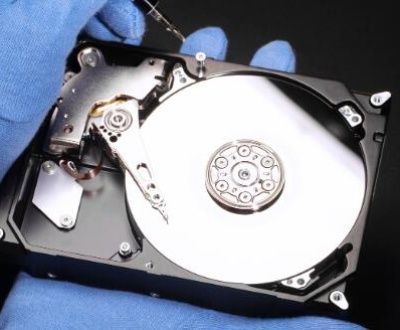The importance of free drive recovery software cannot be overstated. It provides a lifeline to those who may not have the budget for professional data recovery services, which can be prohibitively expensive. These tools cater to a wide range of users from casual computer users to IT professionals ensuring that anyone can attempt to recover lost files.
Additionally, we will outline best practices for data recovery and preventive measures to avoid future data loss. By the end of this guide, readers will be equipped with the knowledge needed to confidently choose and use free drive recovery software to reclaim their lost data.
Before exploring the software options available, it’s crucial to understand the common causes of data loss, as this context will help users appreciate the capabilities of recovery tools.
Accidental Deletion: One of the most frequent causes, accidental deletion can occur during routine file management. Users may delete important files without realizing their significance, leading to panic and urgency in recovery.

Formatting Errors: Formatting a drive, whether intentionally or by mistake, erases all data on that drive. This scenario often affects external storage devices and USB drives, causing significant loss if no backup exists.
File Corruption: Files can become corrupted due to software crashes, power outages, or malware infections. Corrupted files can render data inaccessible, prompting the need for recovery solutions.
Hardware Failures: Physical damage to hard drives such as mechanical failures in HDDs or sudden SSD malfunctions can result in data loss. Symptoms may include unusual noises, system freezes, or the drive not being recognized.
Partition Loss: During partitioning or resizing operations, users may inadvertently lose access to files on a specific partition. Recovery software can help restore data in such cases.
Understanding these causes allows users to take proactive steps in data management and recovery efforts.
Key Features of Free Drive Recovery Software
When evaluating free drive recovery software, several key features stand out. These features enhance usability and effectiveness in recovering lost data.
Scanning Modes: Effective recovery software typically offers multiple scanning options, such as quick scans for recently deleted files and deep scans for thoroughly searching for lost data across the drive. A deep scan is particularly useful for recovering files from formatted or corrupted drives.
File Type Support: Quality recovery software supports a wide variety of file formats, ensuring users can recover documents, photos, videos, and other essential file types. This versatility is crucial, especially for users with diverse data needs.
User-Friendly Interface: A straightforward, intuitive interface is vital for users who may not be tech-savvy. The software should guide users through the recovery process with clear instructions and easily navigable menus.
Preview Functionality: Many recovery programs allow users to preview recoverable files before proceeding with recovery. This feature helps users confirm that they are selecting the right files, reducing the likelihood of mistakes.
Storage Device Compatibility: Free drive recovery software should be compatible with various storage devices, including internal and external hard drives, SSDs, USB drives, and memory cards. This broad compatibility ensures users can recover data from multiple sources.
Recovery Report: Some software options provide a recovery report that outlines the scanning process and results. This report can be useful for users to understand the success rate of their recovery attempts.
No Ads or Hidden Fees: High-quality free recovery software should be free of advertisements or hidden fees that may detract from the user experience.
Popular Free Drive Recovery Software Options
There are numerous free drive recovery software options available, each with its strengths and unique features. Here are some of the most notable programs:
Panda Assistant
Panda Assistant is revolutionizing the way we approach data recovery with its cutting-edge software designed for both novice users and seasoned professionals. In today’s digital age, data loss can be catastrophic, whether due to accidental deletions, hardware failures, or malicious attacks. Panda Assistant emerges as the ultimate solution, providing users with a user-friendly interface and robust functionality that simplifies the recovery process.
With advanced algorithms, Panda Assistant can delve deep into various storage mediums, including hard drives, USBs, and SD cards, to recover lost or deleted files efficiently. Its powerful scanning capabilities ensure a thorough examination of your devices, identifying even the most elusive data. Users benefit from real-time previews, allowing them to select specific files for recovery, ensuring a tailored approach that minimizes the hassle.
Furthermore, Panda Assistant prioritizes user security and data integrity, employing encryption protocols to protect sensitive information during the recovery process. Its versatile compatibility across multiple platforms enhances its appeal, making it a go-to choice for users seeking reliability and effectiveness. Whether you’re looking to recover cherished family photos, important documents, or vital business data, Panda Assistant stands out as a dependable ally in your data recovery journey. With a commitment to excellence and innovation, it empowers users to reclaim their lost data effortlessly, making it an indispensable tool in the realm of digital recovery.
Disk Drill
Overview: Known for its sleek interface, Disk Drill offers comprehensive recovery options and supports multiple file formats.
Key Features: Recovery vault for file protection, quick and deep scanning modes, and real-time data protection.
Pros: High recovery success rate; user-friendly design.
Cons: Free version has limited recovery capabilities; some features require a paid upgrade.
Puran File Recovery
Overview: This tool is designed for straightforward file recovery with minimal complexity.
Key Features: Quick and deep scan modes, portable version available, and supports various file types.
Pros: Lightweight and easy to use; effective for basic recovery tasks.
Cons: Limited advanced features; less support for newer file systems.
PhotoRec
Overview: Although primarily focused on recovering photos, PhotoRec can recover many file types and works on multiple platforms.
Key Features: Open-source software, supports a wide range of file formats, and powerful recovery algorithms.
Pros: Free and open-source; highly effective for recovering lost files.
Cons: Command-line interface may be intimidating for non-technical users; lacks a graphical interface.
Best Practices for Data Recovery
To maximize the chances of successful data recovery, users should follow these best practices:
Stop Using the Affected Drive: As soon as data loss is detected, avoid writing new data to the affected drive. Continued use can overwrite lost files, making recovery more difficult.
Act Quickly: The sooner you attempt recovery after data loss, the higher the chances of success. Delaying recovery can result in further data corruption.
Create Disk Images: If the drive shows signs of failure, consider creating a disk image before recovery. This process preserves the current state of the drive, allowing for safer recovery attempts.
Use Trusted Software: Only download recovery software from reputable sources to avoid malware or further data loss. Read reviews and compare features before making a choice.
Test with Non-Critical Files: Familiarize yourself with the recovery software by testing it on non-critical files. This practice helps you understand the process and become comfortable with the tool.
Backup Regularly: To prevent future data loss, implement a regular backup strategy using built-in Windows tools, cloud storage solutions, or external drives.
Free drive recovery software provides invaluable assistance to users facing data loss challenges. By understanding the causes of data loss, the features of effective recovery tools, and the best practices for data recovery, users can navigate the recovery process with confidence.
Ultimately, taking proactive measures, such as regular backups and cautious handling of storage devices, can significantly reduce the risk of data loss in the future. By leveraging free drive recovery software, users can reclaim lost files and safeguard their digital assets effectively.
About us and this blog
Panda Assistant is built on the latest data recovery algorithms, ensuring that no file is too damaged, too lost, or too corrupted to be recovered.
Request a free quote
We believe that data recovery shouldn’t be a daunting task. That’s why we’ve designed Panda Assistant to be as easy to use as it is powerful. With a few clicks, you can initiate a scan, preview recoverable files, and restore your data all within a matter of minutes.
Subscribe to our newsletter!
More from our blog
See all postsRecent Posts
- Data recovery salt lake city utah 2025-04-18
- Data recovery sacramento 2025-04-18
- Data recovery miami 2025-04-18

 Try lt Free
Try lt Free Recovery success rate of up to
Recovery success rate of up to









